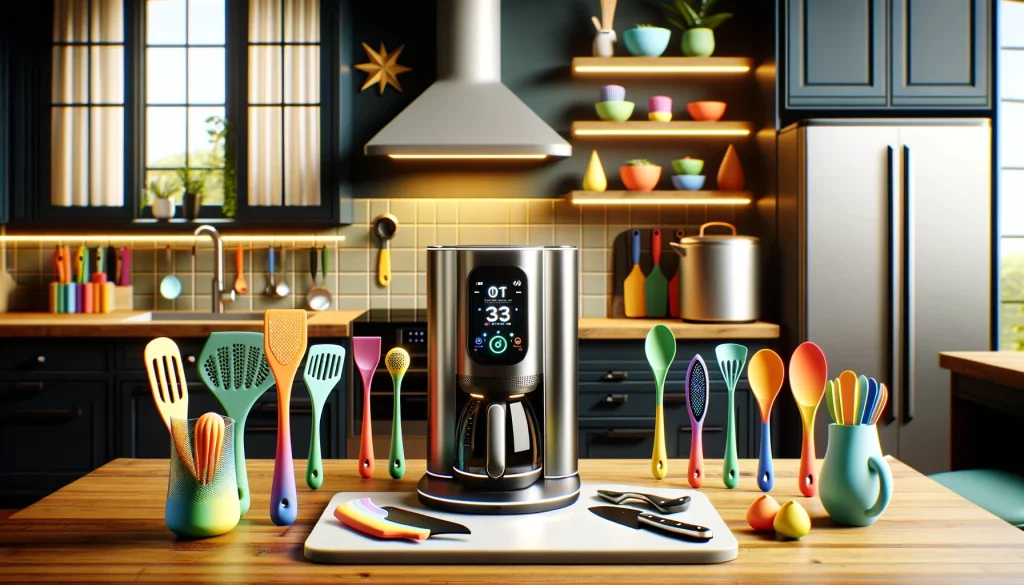 Innovation is the key to staying ahead in the market. Transforming existing products into fresh, innovative offerings requires a creative approach to design and functionality. Here are three ways to breathe new life into your current product lines.
Innovation is the key to staying ahead in the market. Transforming existing products into fresh, innovative offerings requires a creative approach to design and functionality. Here are three ways to breathe new life into your current product lines.
Colour and Material Innovation
The visual appeal of a product often makes the first impression on consumers. Colour and material innovation can significantly enhance this appeal, creating a unique aesthetic or functional advantage.
To innovate with colours, consider the psychology behind colour choices and how they resonate with your target audience. Colors can evoke emotions, convey messages, and influence purchasing decisions. For example, vibrant and bold colours can attract a younger demographic, while more subdued tones may appeal to a mature market. Additionally, limited edition colour runs or seasonal colour variations can rejuvenate interest in existing products.
Material innovation, on the other hand, can redefine the functionality and sustainability of a product. Exploring new materials such as bioplastics, recycled metals, or advanced composites can enhance durability, reduce weight, and minimize environmental impact. For instance, sustainable materials can attract eco-conscious consumers and demonstrate corporate responsibility, potentially opening up new market segments.
Example: Silicone Cooking Utensils
Traditionally, kitchen utensils like spatulas, spoons, and whisks come in metal or plastic. By introducing utensils made from silicone, manufacturers could now offer products in a wide range of colours, from bright and bold to soft and pastel, catering to different tastes and kitchen decors. Silicone adds a pop of colour and provides functional benefits like heat resistance, non-stick properties, and durability. This material innovation revitalized the kitchen utensils category, making these everyday items stylish and more practical.
Shape and Form Innovation
The shape and form of a product are not just about aesthetics; they also play a crucial role in functionality and user experience. Innovative shapes or structural designs can differentiate a product, making it more ergonomic, user-friendly, or visually striking.
When rethinking the shape and form, consider how modifications can improve the product’s function or how consumers perceive it. An ergonomic redesign can make a product more comfortable to use, leading to a better experience and increased customer satisfaction. Similarly, a unique or avant-garde design can make a product stand out and appeal to niche markets looking for something different.
Moreover, the shape and form should align with the brand’s identity and the message it wants to convey. A sleek, minimalist design might reflect a brand’s commitment to simplicity and functionality, while a more complex, intricate form could showcase innovation and attention to detail.
Example: Ergonomic Knife Designs
Knives are essential in any kitchen, but their traditional designs may not always consider ergonomic efficiency. Innovating the shape and form of kitchen knives can lead to more comfortable and safer use. For instance, a knife with a curved handle that fits naturally in the hand can reduce strain during prolonged use. The blade shape can also be optimized for specific tasks, like a broader, curved blade for rocking cuts, which is ideal for mincing herbs and vegetables. This thoughtful redesign can transform the cooking experience, making prep work easier and more enjoyable.
Technology Integration
Integrating technology into products can significantly enhance their value and appeal. Incorporating smart features and connectivity options can transform a conventional product into an innovative solution that meets the evolving needs of consumers.
Technology integration can take many forms, from embedding IoT (Internet of Things) capabilities for remote monitoring and control to utilizing AI (Artificial Intelligence) for personalized user experiences. For example, adding smart sensors to a fitness device can give users real-time health data and insights, enhancing the product’s functionality and appeal.
Connectivity is another crucial aspect of technology integration. Products that can connect with other devices and platforms offer a seamless user experience, increasing their utility and attractiveness. Whether it’s through Wi-Fi, Bluetooth, or other communication protocols, enabling products to interact with the broader digital ecosystem can open up new use cases and value propositions.
Efficiency improvements, both in terms of energy consumption and performance, are also vital. Consumers are increasingly looking for products that not only offer advanced features but are also energy-efficient and cost-effective to operate. By integrating energy-saving technologies and optimizing performance, companies can offer more competitive and environmentally friendly products.
Example: Smart Cutting Boards
Integrating technology into a basic kitchen utensil, like a cutting board, can elevate its functionality significantly. A smart cutting board could feature built-in scales for measuring ingredients, timers for tracking food prep times, and even sensors to detect the freshness of produce placed on it. With connectivity features, such a board could sync with mobile apps or digital recipe books, guiding the user through cooking processes and ensuring precise ingredient measurements. This technological upgrade turns a simple surface for chopping into a multifunctional tool that aids in the entire cooking process.
Conclusion
By innovating in these areas, we can see how we can transform ordinary kitchen utensils into extraordinary culinary tools that enhance the cooking experience, offering aesthetic appeal and improved functionality. Innovating new products from existing ones is a dynamic process that involves a deep understanding of market trends, consumer preferences, and technological advancements. By focusing on colour and material innovation, redefining shape and form, and integrating cutting-edge technology, companies can create products that are visually appealing, functional and aligned with modern consumer expectations.
This approach revitalizes product lines and strengthens brand identity and market position. With a commitment to innovation and a strategic approach to product development, we can transform existing products into cutting-edge solutions that captivate customers’ minds and wallets.
